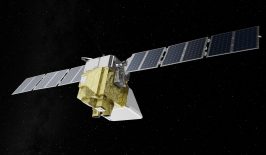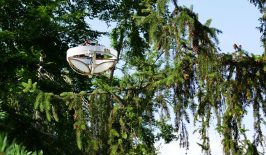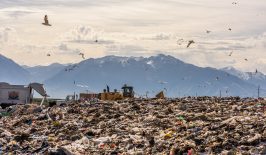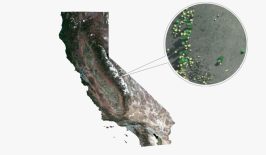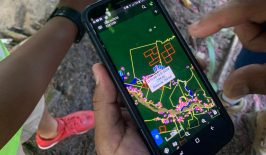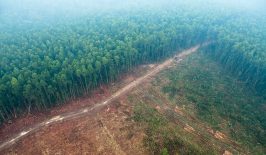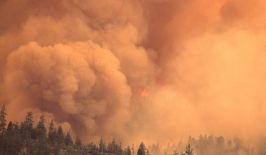Fireworks, although much cherished for their stunning displays, have been making their way steadily into popular discourse over the past few years. Many have long complained about the noise pollution firework displays cause, traumatising those with PTSD as well as pets and harming local wildlife. The toxic smoke and fumes produced by such displays can exacerbate respiratory conditions, while fire hazards and safety concerns regularly lead to accidents, injuries and fatalities. Firework displays also contribute regularly and significantly to environmental pollution by releasing heavy metals and chemicals into the air, water and soil, as well as around 60,340 metric tons of CO2 annually, Green Matters estimates. That’s a little more than 12,000 gas-powered cars emit every year.
Considering these stark negatives, many places have opted to ban or heavily regulate firework use, including Australia, Canada, the UK, Germany and several other states and municipalities. In Berlin, New Year celebrations saw police reporting a total of 102 criminal complaints in connection with attacks against emergency services, which has reignited discussions surrounding a complete ban.
With all of the chaos that fireworks reap, thoughts have naturally turned to alternative ways to mark festivities without the associated risks. Drone light shows have, in recent years, come to the forefront of these discussions, emerging as a modern alternative to centuries-old fireworks displays.
Unlike fireworks, which rely on explosive pyrotechnics, drone light shows utilise a fleet of unmanned aerial vehicles (UAVs) equipped with LED lights to choreograph intricate formations against the backdrop of the night sky. The results, when done with the right precision and synchronisation, can be visually spectacular.
However, aesthetics aside, a key advantage of drone light shows is their environmental friendliness. Unlike traditional fireworks, drones powered by electric batteries produce minimal noise and emissions, making them a cleaner and greener alternative for outdoor events, and can even surpass limitations on locations, meaning they can be used indoors too. They result in zero air pollution and leave no toxic chemical fog, they won’t spark wildfires, or leave falling debris or plastic pollution (when everything goes to plan) which means fewer hazards for wildlife.
Furthermore, drone light shows offer greater flexibility and creative freedom compared to traditional fireworks. With the ability to program intricate sequences and dynamic effects, organisers can tailor the performance to suit any theme or occasion, whether a music festival, corporate event or national celebration.
Orchestrating a drone light show is no easy feat. It requires a skilled team of drone pilots, technicians and creatives to bring to life. From meticulously planning and programming the flight paths to coordinating the timing with music. Indeed, every precaution must be taken to ensure the smooth and safe operation of the drones and every millisecond of the show must be meticulously executed to ensure a seamless and immersive experience for spectators.
However, the growing popularity of drone light shows is reflected in the booming market for this innovative form of entertainment. Valued at $1.3 billion in 2021, the drone light show industry is projected to reach $2.2 billion by 2031, signalling a significant shift towards this modern spectacle. However, interestingly, and in spite of the various bans and restrictions being put in place globally, the fireworks market is also anticipated to rise over the same period, albeit at a slower pace. Valued at $2,486 million in 2021, the market for fireworks is expected to expand to almost 3,220 million by 2027.
Botlab Dynamics is an IIT Delhi-incubated startup that specialises in producing spectacular aerial performances using quadcopters. Botlab Dynamics’s team of engineers and designers have collaborated with various companies and government departments to deliver awe-inspiring drone shows across India.
“We developed the entire technology indigenously,” explains founder Tanmay Bunkar. “It has two parts: hardware and software. The hardware, the drone, took us five years to figure out. Now, we design and build the casing of the drone in-house, along with electronic components like the flight controller, motor controller, and GPS. The software needed to coordinate these flights and to create formations is also built in-house.”
These drone shows are highly technical, and their success depends on many factors. “One precaution we take is we never fly on top of people,” explains Bunkar.
“We create a fenced area, and the viewers must be 200 to 300 meters away from where the drones are flying. For security purposes, we create a ‘Geo fence,’ a volume that drones are not allowed to cross. If they cross, they’re given warnings, and if they persist, their motors are turned off.”
“Even before taking off, these drones go through 17 health checkups,” adds the founder. “If any drone fails, it’s not allowed to take off. So sometimes, when you see formations, a couple of them are missing – those are the drones that failed the safety checkup.”
While both fireworks and drone light shows provide visual entertainment, drone light shows offer a more environmentally friendly alternative by reducing air and noise pollution, minimising fire risk, producing less debris and promoting long-term sustainability. However, it’s important to consider other factors such as energy consumption and materials used in drone production when assessing their overall environmental impact.
The energy consumption and materials used in drone production can vary depending on factors such as the size, complexity and purpose of the drone. Of course, drones require more materials that take longer to break down than fireworks. Materials such as carbon fibre, aluminium or plastic composites typically make up the lightweight frame, while electronic components including motors, batteries, flight controllers, sensors, and communication systems are typically made from copper, silicon and various alloys. The production of these materials involves resource extraction processes that have their own environmental impact, including habitat destruction and pollution. Likewise, electronic waste (e-waste) management is an ever-present concern due to the presence of hazardous materials in electronic components.
However, what with efforts being made to improve the sustainability of drone production and operation, including optimised manufacturing processes and the development of more energy-efficient components, as well as advancements in battery technology and alternative energy sources like solar power being explored, it’s easy to reason that drone use has enormous potential when it comes to replacing fireworks in entertainment settings.
As we look towards the future of celebrations and entertainment, it’s clear that drone light shows have the potential to revolutionise the way we experience special occasions. With their blend of technology and artistry, drone light shows are poised to take centre stage in how we mark festivities around the world.


